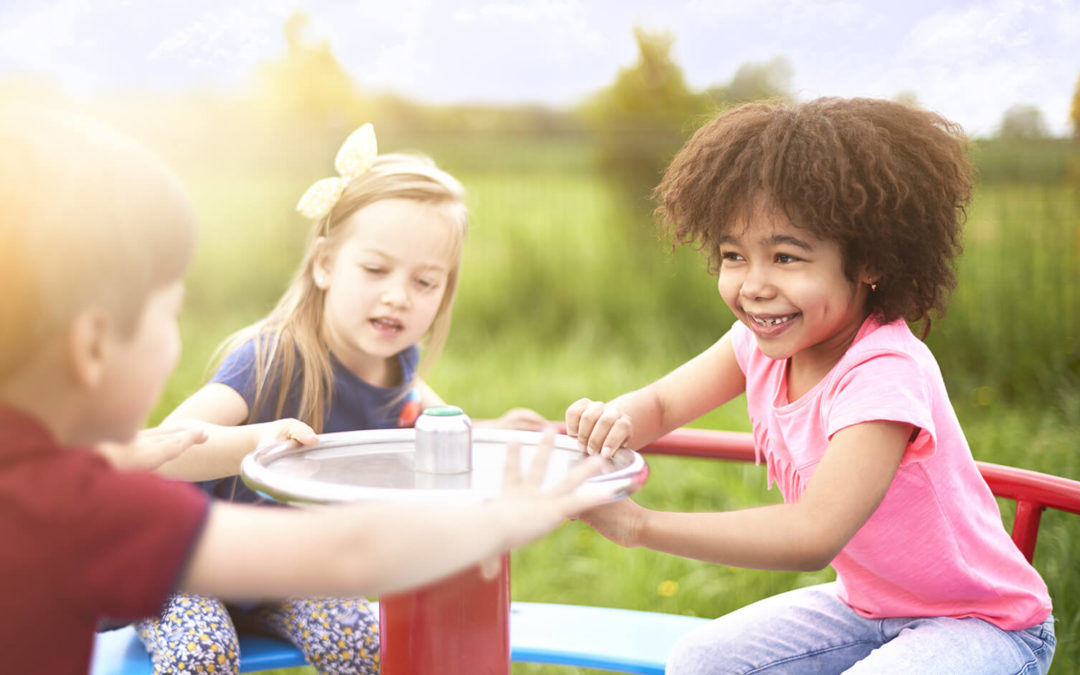It is that time of year again when families begin to enjoy much of their free time outdoors. This often involves playing on playground equipment. In 2009, more than 230,000 children visited hospital emergency rooms due to playground injuries. We do not want your child to be one of them!! Prevention is the key. Below is a list of several tips that can help you to keep your playground equipment as safe as possible. More information can be found at the following websites: www.healthychildren.org and www.nsc.org (National Safety Council).
General Structure:
- Make sure your equipment is age and size appropriate- structures created for toddlers may break under the weight of an older child. Ideally children less than five should play on equipment separate from older children.
- Wooden structures should be made out of all-weather wood which is less likely to splinter.
- Check to make sure there are no protruding points such as rusted or exposed bolts that could hook a child’s clothing or scratch them. Check for loose nuts and bolts periodically.
- Make sure that the structure is built on a soft surface- 79% of injuries relate to falls on the ground. What a child falls onto can make a big difference as to the seriousness of the injury. Sand, wood chips, rubberized matting, shredded tires, bark mulch and pea gravel cushion falls better than grass, concrete or dirt which are too hard. The absorptive surface should have a minimum depth of 12 inches and there should be a 6 foot use zone in all directions.
- Install playground equipment at least 6 feet from fences or walls.
- Never attach ropes, jump ropes or pet leashes to playground equipment as children can strangle on them.
Slides:
- Place slides in the shade or away from the sun to avoid burns.
- There should be a platform with rails at the top for children to hold on to. A hood or bar at the top of the slide is helpful as it also encourages a child to sit down before sliding.
- Open slides should have sides at least 4 inches high.
- Avoid drawstrings on clothing as they have a tendency to get caught on the slides leading to one of the most common setups for injury on a slide.
- Teach your children to only use the ladder to go up the slide, to take turns and to get out of the way at the bottom of the slide as quickly as possible.
Swings:
- Swings should be made of a soft, flexible material such as rubber, plastic
or canvas. - Do not allow two children to swing on the same swing
- Only two swings should be within each supporting framework and should be 24 inches apart.
- Full bucket (rather than half bucket) seats are most safe for younger children.
- Teach your children to stay clear of swings that are being used.
Climbing structures:
- Rungs, stairs and steps should be evenly placed.
- Round rungs that will be gripped by young hands should only be 1 – 1 ½ inches in diameter.
- Guardrails should surround all platforms and should be at least 29 inches tall for preschool age children and 38 inches for school age children.
- Any openings such as in guardrails or between ladder rungs should be less than 3.5 inches apart or more than 9 inches to avoid entrapment of a child.
Trampolines:
Approximately 100,000 injuries occur yearly as a result of trampoline use, most often from backyard trampolines. In one study, 30% of emergency room visits related to trampoline injuries resulted in a fracture requiring either hospitalization and/or surgery. Netting, padded surfaces and even parent supervision are not enough to prevent these injuries. For these reasons, the American Academy of Pediatrics (and Complete Children’s Health pediatricians!) recommends that trampolines never be installed as playground equipment. Trampolines should only be used in supervised training programs such as for gymnastics or diving. We encourage you to find another means of playing outdoors as a family such as going for a walk or run, swimming, biking or throwing a ball around.
We hope that you can use these guidelines as well as others found in the aforementioned websites as useful tools as you put together or revise your playground equipment.

